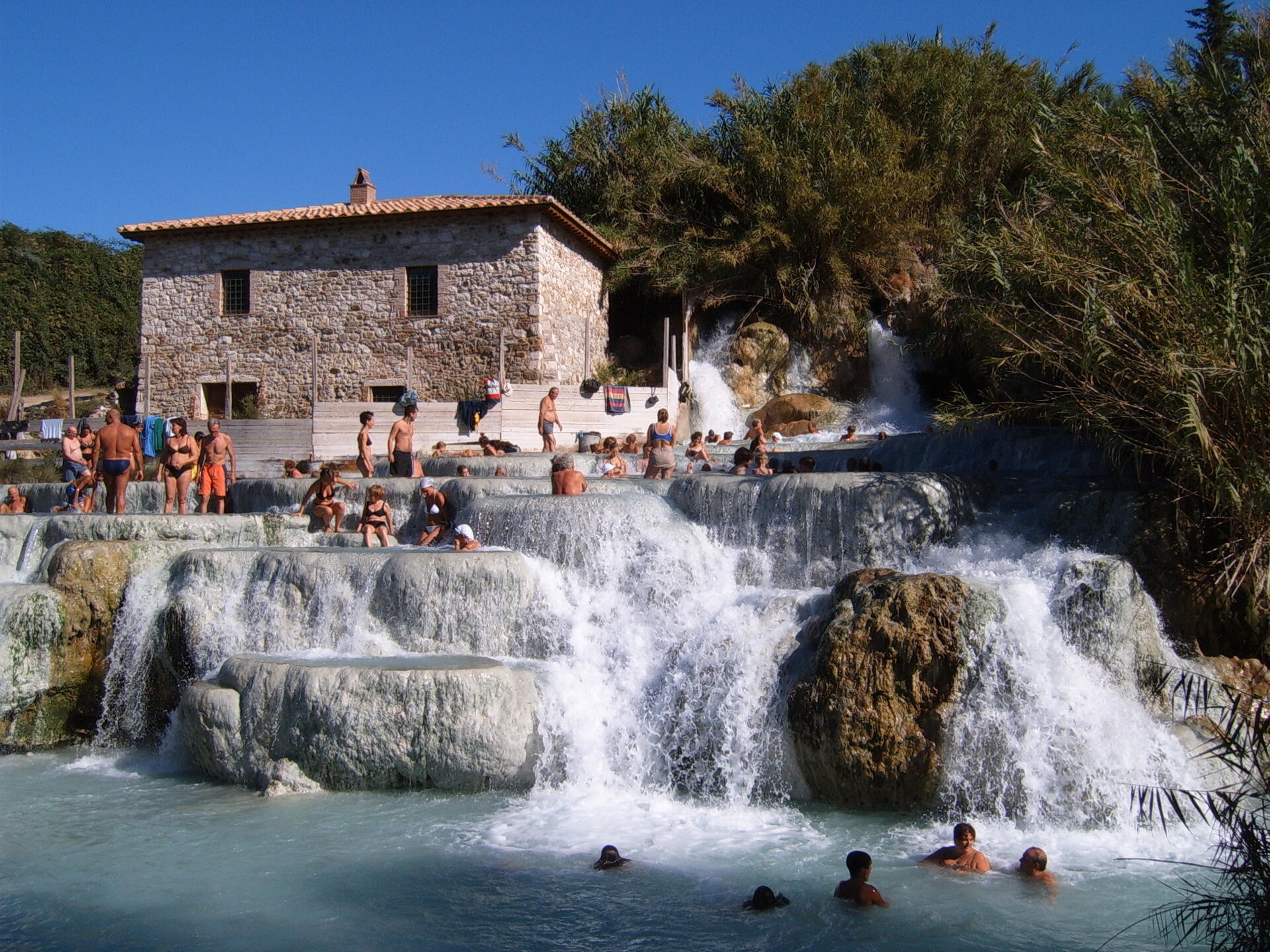If are in Rome or Florence during the cooler months of the year, warm up the Ancient Roman way: head to the hot springs. Terme, as thermal baths are known in Italian, are peppered throughout southern Tuscany and northern Lazio, where the earth was once a shifting hot bed of volcanic activity. Rising up through the ground, the hot, often sulfur-based, water has gathered into pools where you can sink into and relax.
Thermal baths in this part of Italy come in two varieties: the natural and wild or the centro benessere or spa type. The natural hot springs are free, while the spas vary in price from the pricey to the affordable. Because we’re an adventuresome lot, most of the thermal baths in the list below are natural, though where there are terme a spa is never far away. Getting to the natural terme requires a car, come with no opening or closing hours (go at night for a dip below the stars) and are amazing. The first time you come across a glossy white terrace filled with opaque water steaming in the forest will be a moment you won’t forget.
And there is an etiquette for terme going: cover up in a housecoat (with a bathing suit underneath!) and walk to the edge of the springs in flip flops. Leave your valuables in the car as there’s no easy way to keep an eye on your stuff.
5 Roman Baths in Tuscay & Lazio
Bagni di Petriolo: Off the road running between Siena and Grosseto are the thermal springs that Cicerone once wrote about. Known since the Roman times, Bagni di Petriolo’s hot waters (43ºC) run down the hill into the Farma River. The hot water has been separated from the cooler river water, which makes this terme perfect for when the weather gets a little warmer, as you can go from warm to cool pool just like the Ancient Romans.
Bagni Vignoni: Off of the Chiesa di San Giovanni Battista in the centre of Bagni Vignoni is a large pool of steaming water. This church was built in the Middle Ages, but the medicinal and relaxing properties of the hot waters here have been known about since Roman times. This where Caterina of Siena took her healing baths, as did the Medicis. You can’t jump in, so head to Parco dei Mulini. There you will find free hot springs to relax in. If you’re looking for a spa in this area look here.

San Filippo: This is another Tuscan terme located in the picturesque rolling hills of the Val d’Orcia. The most particular characteristic of this terme, called Fosso Bianco, is the impressive white mountain that rises from behind the hot spring. It seems as if it were formed of ice, but it is a calcified mountain made from the minerals of the terme. These minerals are what make the waters of San Filippo so good for you. There is also another free hot spring in this area called L’Aqua Passante, made of various small pools that drain one into the other.
Saturnia: If you are driving around looking for the thermal baths of Saturnia, you shouldn’t have trouble finding them for all the cars parked nearby. Saturnia is a popular destination on cool weekends and holidays, and once you see the terraced pools cascading down the side of an idyllic Tuscan hill, you’ll understand why. The steamy water gathered in the small pools is highly recommended as is leaning against the hot current for a water massage, and Saturnia is not that far from Rome either.

Viterbo: The nearest terme to Rome, Viterbo’s hot springs are not as pretty as the Tuscan ones but are just as warm and relaxing (and did I mention they are close to Rome?). The calcified pools are shallow, and there are two areas to choose from: Piscine Carletti (2.5 km from the centre of Viterbo) or Bagnaccio (8 km from the centre). The first has several pools while the latter has only one, but it is big as the name indicates. There are also spas near Viterbo that have pretty good weekend deals and even offer transportation from Rome to get you there.
Contact [email protected] with Blog Enquiry in the subject title for any feedback or requests for a topic you want us to cover. Voted one of the best things to do in Rome, Eating Italy Food Tours offer Rome tours through the city’s oldest and most characteristic neighborhoods.










